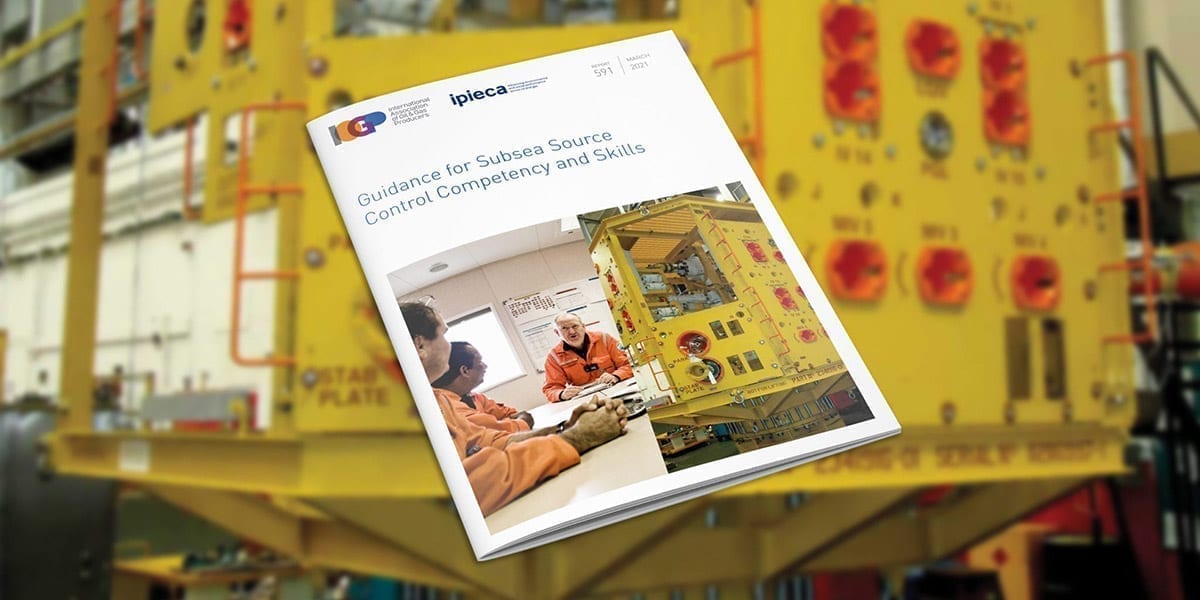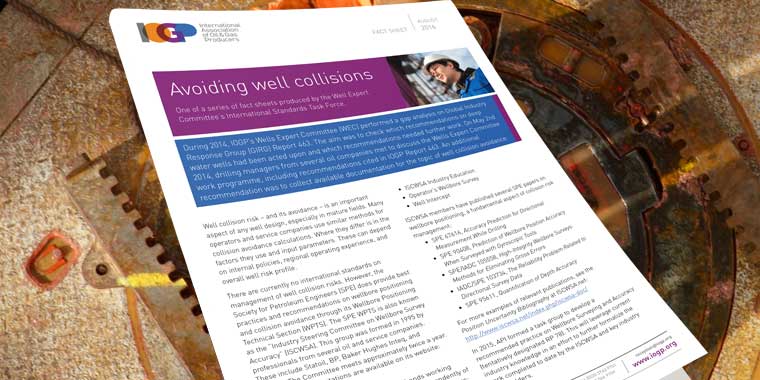Well control
Primarily focussed in the area of prevention, in order to reduce the likelihood of major incidents.
Well control
Primarily focussed in the area of prevention, in order to reduce the likelihood of major incidents.
Well control
Our well safety focus is primarily in the area of prevention, in order to reduce the likelihood of major incidents. As part of this, we aim to eliminate any unplanned release of oil and gas from a well.
Key work areas
Macondo: 10 years on. This video shows how IOGP members, working together, helped to rebuild trust in the industry, and continues to do so.
Related content
Global Industry Response Group (GIRG)

Global Industry Response Group (GIRG)
Where were you when the Macondo blowout and oil spill occurred?
It was a day everyone in the oil and gas industry will long remember.
On 20th April 2010, a blowout on the Deepwater Horizon, drilling at the Macondo prospect in the Gulf of Mexico, killed 11 crew and caused a major oil spill.
Given our unique role as the global voice of the upstream oil and gas industry, members looked to IOGP to take an important role in the aftermath of the incident. The result was the creation of the Global Industry Response Group (GIRG) in July 2010.
GIRG’s remit was to identify, learn from and apply the lessons of Macondo and similar well incidents such as Montara off the coast of Australia.
GIRG drew on the experience and talents of more than 100 technical experts and senior managers – many of them full-time – drawn from some 20 companies. The project lasted some nine months. The value of that freely-donated expertise came to tens of millions of dollars.
GIRG divided its work into three core areas:
- Prevention: to improve drilling safety and reduce likelihood of a well incident
- Intervention: to decrease the time it takes to stop the flow from an uncontrolled well
- Response: to deliver effective oil spill response preparedness and capability
International recommendations for a global industry

International recommendations for a global industry
In May 2011, OGP published a comprehensive set of GIRG recommendations and proposed that three entities be created to manage and implement them.
- The Wells Expert Committee (WEC): to analyse well incident report data and share lessons learned, advocate harmonized risk-based standards, communicate good practice, provide a permanent improvement well control teams’ competence and behaviours and promote continued improvement in BOP reliability and efficiency.
You can learn more about the committee at Wells Expert Committee
- The Subsea Well Response Project (SWRP): a consortium of operators to investigate, design and deliver improved capping response with a range of equipment for shutting in wells, to design additional hardware for the subsea injection of dispersant and to further assess the need for and feasibility of global containment solutions.You can visit Subsea Well Response Project to learn more
- The Oil Spill Response Joint Industry Project: to manage the recommendations on oil spill response – develop new recommended practices, improve understanding of oil spill response tools and methodologies and to enhance coordination between key stakeholders internationally.Visit www.oilspillresponse.com for more information.
Oil Spill Response

Oil Spill Response
The April 2010 Gulf of Mexico (Macondo) oil spill incident, and the Montara incident in Australia which preceded it, have had far-reaching consequences in prompting the re-examination by industry not only of operational aspects of offshore operations, but also of an operator’s ability to respond in the event of an oil spill incident or well blowout.
In response we formed the Global Industry Response Group (GIRG), tasked with identifying learning opportunities both on causation and in respect of the response to the incident.
Nineteen recommendations were identified and these are being addressed via a three-year Joint Industry Project (JIP) funded by sixteen oil industry members. The Oil Spill Response JIP (OSR-JIP) has initiated discrete projects or provides support to projects initiated by other trade associations in the nineteen subject areas resulting from the OGP GIRG-OSR project. The OSR-JIP is managed by IPIECA on behalf of OGP in recognition of its long-standing experience with Oil Spill Response matters.
Visit the Oil Spill Response website to find information on the project.
OSPR Animation from JIP on Vimeo.
Learning resources

Learning resources
Well control lesson sharing #21-4
Gas release during abandonment operations
The International Association of Oil & Gas Producers (IOGP) Well Control Incident lesson sharing system was established as a means of notifying fellow IOGP members and the wider community of the lessons learned from well control incidents and near misses. The sharing of these lessons will help to promote learning and avoid the repetition of similar errors. The result will move the industry to a higher level of well control safety.
An IOGP member company offered this well control incident to share their experience and to prevent similar incidents from occurring.
During operations to recover the tubing, as part of a well abandonment, a sudden release of gas occurred. The well was eventually shut-in and made safe although unfortunately during the incident one of the crew members sustained a painful injury while evacuating from the site.
The investigation highlighted gaps in the implementation of the Management of Change process, in Planning and Procedures and in the Equipment used. It also identified that elements of Human Factors contributed to the incident.
The video lasts 12 minutes without discussion.
Five human factor videos to show human performance
These five Human Factor (HF) videos are intended to be used for human performance training while managing wells process safety.
Each video covers a Human Factor topic:
- Situational Awareness
- Communications
- Decision Making
- Leadership
- Teamwork
Each of the approximately 2 minute long videos are staged in an actual rig environment, highlighting engagement and effectiveness. 10% is little engagement, while scores going up to 70-80% are the interactivity we want supervisors to achieve.
The videos are specially made to initiate discussion on Human Factors in well operations.
The videos have been produced by IOGP Member company Shell.
Well control lesson sharing #16-2
Well Control Event During Completion Installation
The International Association of Oil & Gas Producers (IOGP) Well Control Incident lesson sharing system was established as a means of notifying fellow IOGP members and the wider community of the lessons learned from well control incidents and near misses. The sharing of these lessons will help to promote learning and avoid the repetition of similar errors. The result will move the industry to a higher level of well control safety.
An IOGP member company offered this well control incident to share their experience and to prevent similar incidents from occurring.
The well control incident during the final stages of the completion of a horizontal screen producing well. The installation of lower completion was completed and the liner top packer was successfully set and pressure tested. The remaining program steps were to place a base oil cushion above the closed fluid loss valve to create an underbalanced condition to support production kick off.
The video lasts 4 minutes without discussion.
Identifying and responding to weak operational signals
The Weak Signals video is intended to be used during a rig-based safety meeting for personnel involved in managing Wells Process Safety. It is intended to be used to facilitate discussions, relevant to both the individuals, the team and the rig.
The video has 6 different scenes and includes voices of key individuals involved with controlling process safety. After each scene there are some questions which can be discussed by the audience, so the instructor can stop the video after each scene to facilitate discussion. A facilitators guide is available to download.
It is suggested that drilling contractors, service providers and operator personnel use this resource. Group size is expected to be around 10-12 people, but you may want to break into smaller groups for the discussion.
The video lasts 17 minutes without discussion. The total time of the exercise including the video and discussion is appromimately 1 hour.
This video has been produced by the Wells Competency Training Subcommittee, IOGP.
Well control lesson sharing #16-1
Well control event when using an MPD system
The International Association of Oil & Gas Producers (IOGP) Well Control Incident lesson sharing system was established as a means of notifying fellow IOGP members and the wider community of the lessons learned from well control incidents and near misses. The sharing of these lessons will help to promote learning and avoid the repetition of similar errors. The result will move the industry to a higher level of well control safety.
An IOGP member company offered this well control incident to share their experience and to prevent similar incidents from occurring.
The well control incident takes place during when drilling a high pressure exploration gas-condensate bearing reservoir section using automated Managed Pressure Drilling (MPD) and Rig Pump Divertor (RPD) equipment. MPD systems enable continuous monitoring of annulus conditions and can provide early kick detection. The video tackles whether you shut in a well different when using MPD equipment and how your crew considers well control when preparing to use a new or unfamiliar technology like MPD.
The video lasts 4 minutes without discussion.
This video has been produced by the Well Control Incidents Subcommittee, IOGP.




























